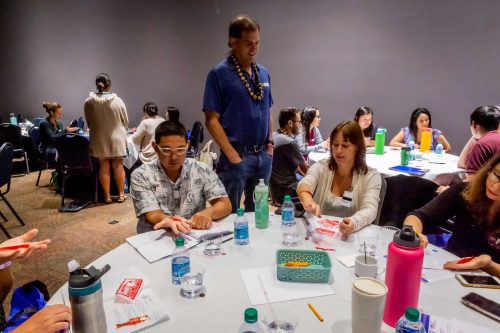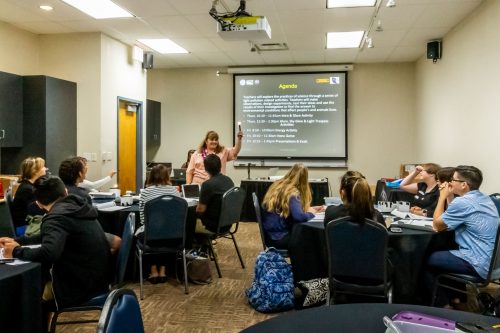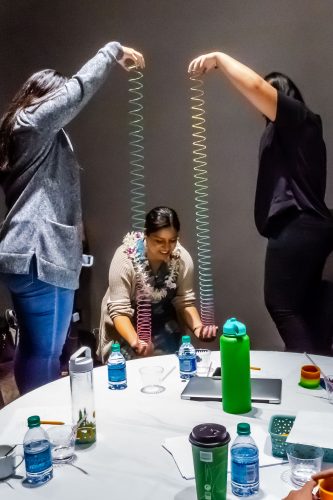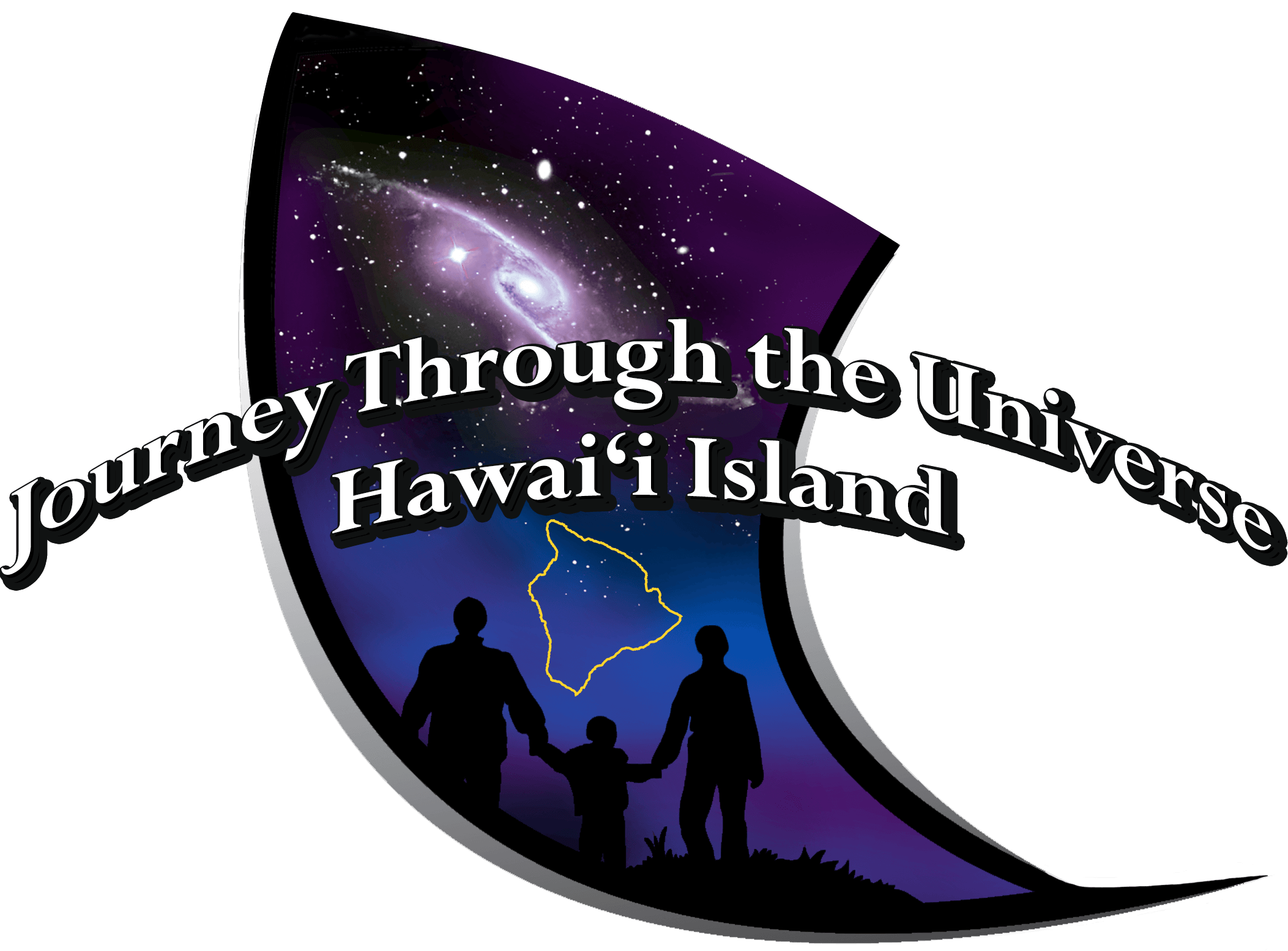- Date: 18 Sep 2019
- Comments: (0)
- Categories: For Everyone, Outreach
Journey Through the Universe NGSS Teacher Workshop
“How do we encourage students to ask questions about our natural environment?”
We sought to answer this question and more during the Journey Through the Universe Next Generation Science Standards (NGSS) workshop held at ‘Imiloa Astronomy Center on September 5 & 6, 2019.
Gemini Observatory, in partnership with the Hawaiʻi State Department of Education (HIDOE), Maunakea Observatories and Hawaiʻi Island business community have a long history of hosting the Journey Through the Universe (Journey) program over the past 16 years.
During this year’s two-day workshop, over 60 K-12 teachers engaged in NGSS-aligned and astronomy-centered activities. Teachers were provided with the resources needed to take these activities back to their classrooms to use with their students.
Esther Kanehailua, Complex Area Superintendent of Hilo-Waiakea, Darrell Nekoba, School Renewal Specialist, and Janice Harvey, Journey Program Leader opened the workshop with a brief history of the Journey program, highlighting the collaboration between Journey and the HIDOE. Doug Simons, Director of the Canada-France-Hawaiʻi Telescope closed out the opening remarks by talking about astronomy and education in our Hawaiʻi Island community.
Lauren Kaupp, HIDOE Science Specialist started both days by focusing on the overarching themes of NGSS and how to truly integrate them into classrooms with diverse cultural and socio-economic perspectives.
After lunch on both days, teachers engaged in NGSS-based activities presented by Dr. Connie Walker and Rob Sparks from the National Optical Astronomy Observatory (NOAO) in Tucson and Alyssa Grace from Gemini Observatory.

Rob Sparks leads teachers through an investigation on fortune telling fish. Photo credit: Joy Pollard.

Dr. Connie Walker begins instruction on creating a constellation box. Photo credit: Joy Pollard.
Dr. Walkerʻs sessions for grade level 6 – 12 teachers covered the topic of light pollution using hands-on Quality Light Teaching Kits (QLTK), custom made by NOAO. Dr. Walker and the Journey team adapted two different activities in the QLTK to focus on Hawaiʻi-based natural phenomena. One activity featured honu (Hawaiian green sea turtles) in a board game that teaches how light pollution affects the migration patterns of honu and the survival of their young. The second activity adapted for Hawai‘i featured a photo taken from space of Honolulu at night which dramatically shed light (pun intended) on how significantly our dark skies are affected by light pollution. The image was part of a end-of-unit project leading teachers and students through a real-life investigation of various street lights, their energy consumption, and the effects they have on light pollution in Hawaiʻi. Every school represented in the workshop took home enough kits for one classroom.

Alyssa Grace helps teachers stabilize their slinkies in preparation for a slow motion video. Photo credit: Joy Pollard.

K – 2 teachers explore the Moonbear’s Shadow kit as a lesson on shadows for students. Photo credit: Joy Pollard.
Rob Sparks and Alyssa Grace shared a wide variety of activities meant to inspire K – 5 teachers and flip the structure of teaching science on its head. NGSS focuses on inquiry-based, student-led discussions and investigations designed to engineer solutions, as opposed to step-by-step processes that solely teach content knowledge. Teachers became students again as they went through their own investigations and experienced the wonder of being a scientist. In addition to hands-on student-led investigations centered around the electromagnetic spectrum and the refraction of light, Sparks and Grace also taught lessons using the Gemini portable planetarium. They ended the workshop with cultural astronomy stories from around the world.
At the end of the workshop, teachers participated in a survey and anonymously shared comments which included:
“The most valuable part about this workshop was the way presenters delivered instruction with a question versus going straight into the content.”
“I will implement the idea of environmental issues and how it can affect living things (light pollution and its effects on health) into my classroom.”
“I will try out all of the lessons presented in this workshop. Especially enjoyed and will use the wheel lenses, moon phases, and shadow activity.”
Read more about this workshop in this feature article in the Hawaiʻi Tribune-Herald.
To learn more about the Journey Through the Universe program visit our website.






